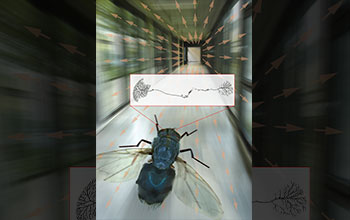Multimedia Gallery
Flight Patterns of Flies
Researchers from the Max Planck Institute of Neurobiology are exploring how flies navigate their environment and their own movement so efficiently. The researchers built a flight simulator in which they simulated specific flight patterns by controlling optical "flux fields" presented to a test subject (a fly).
The researchers are investigating what goes on in a fly's brain while they are in flight. Although a fly's brain is no bigger than a pinhead, they are able to negotiate obstacles in rapid flight, have split-second reactions (to a hand trying to swat them, for example), and navigate their way to a tasty meal. Results of the research could aid in developing robots that can independently apprehend and learn from their surroundings.
To learn more, see the EurekAlert! news story Robotics insights through flies' eyes. (Date of Image: 2009)
Credit: Max Planck Institute of Neurobiology/Borst & Schorner
Images and other media in the National Science Foundation Multimedia Gallery are available for use in print and electronic material by NSF employees, members of the media, university staff, teachers and the general public. All media in the gallery are intended for personal, educational and nonprofit/non-commercial use only.
Images credited to the National Science Foundation, a federal agency, are in the public domain. The images were created by employees of the United States Government as part of their official duties or prepared by contractors as "works for hire" for NSF. You may freely use NSF-credited images and, at your discretion, credit NSF with a "Courtesy: National Science Foundation" notation.
Additional information about general usage can be found in Conditions.
Also Available:
Download the high-resolution JPG version of the image. (1.7 MB)
Use your mouse to right-click (Mac users may need to Ctrl-click) the link above and choose the option that will save the file or target to your computer.

